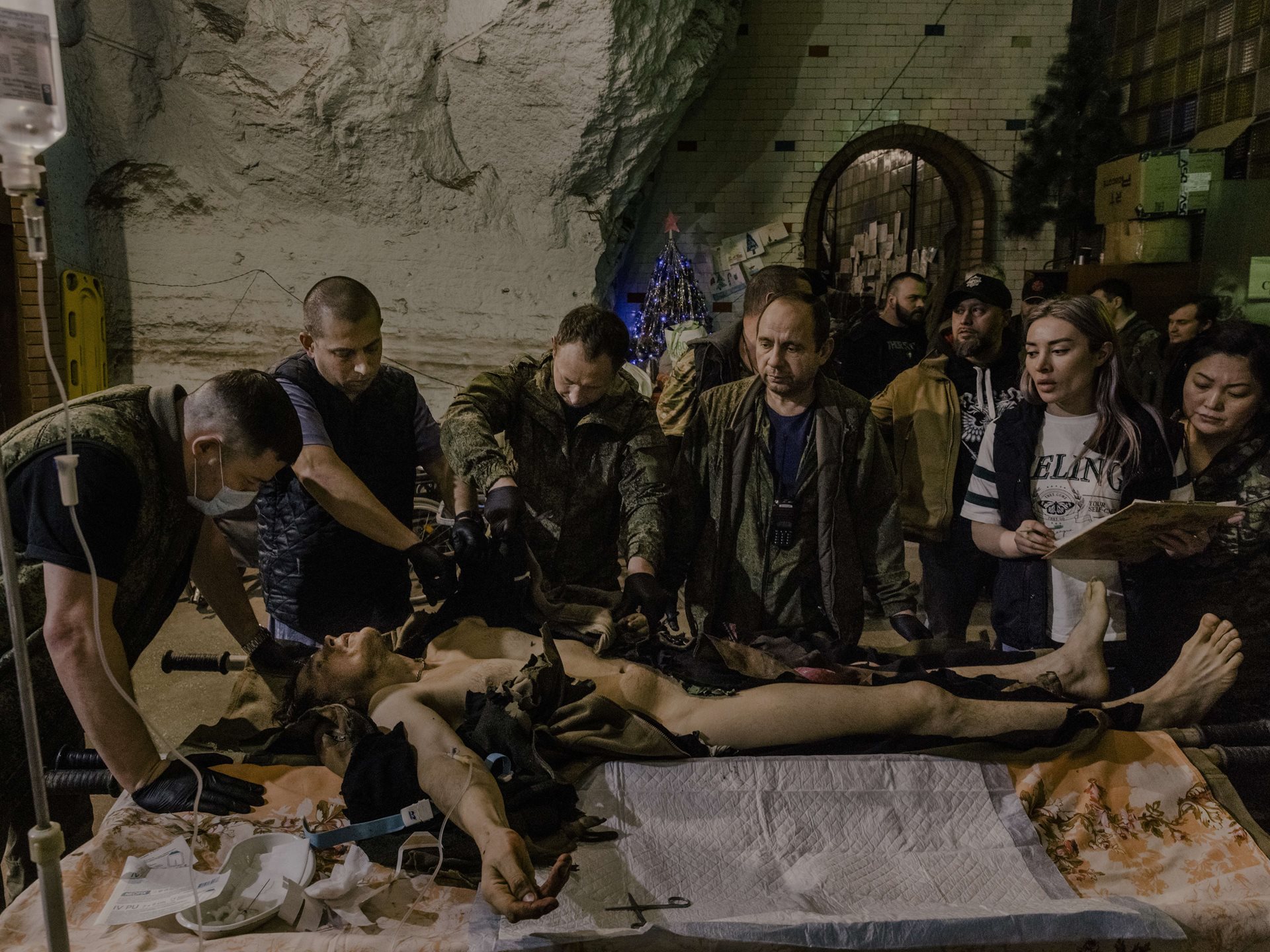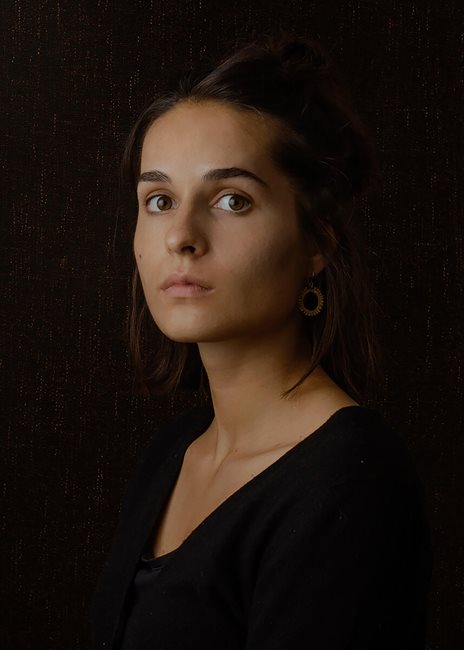A wounded Ukrainian man who was conscripted to fight for Russia at a field hospital in an underground winery in the Bakhmut region, near Donbas, Ukraine. His left leg and arm were later amputated.
The soldier is originally from a Ukrainian town in the Lugansk Region that has been under the control of Russian-backed separatist forces since 2014. He was forcibly drafted two days before the full-scale invasion of Ukraine started three years ago during a large-scale mobilization. Russia later unilaterally annexed the territory and the separatist militia that conscripted him was integrated into the Russian army.
Russia has occupied vast swathes of eastern Ukraine, as part of the largest war of conquest in Europe since World War II. Bakhmut, where the soldier was injured, has seen some of the bloodiest battles. Ukrainian officials have repeatedly condemned these mobilizations as illegal under international law. They say the conscriptions are part of Russia’s broader strategy to integrate these regions and legitimize Russian control.
Heitmann, who has covered Russia since 2018 remains one of the few Western photographers working in Russia, where the environment for journalists has been extraordinarily repressive.
This photograph is part of a larger project contrasting the brutal realities of the war in Ukraine with the distorted perceptions within Russian society, which you can view on the photographer's website.
This caption was updated on 19 May 2025.
When this photo was captured, the photographer did not know the nationality of the subject, only that he was a soldier fighting with Russian forces. This is described accurately in The New York Times' original story. As part of their follow-up reporting, in early 2025, The New York Times discovered the soldier is from a Ukrainian town in the Luhansk region that has been under the control of Russian-backed separatist forces since 2014. He was forcibly drafted two days before the war started during a large-scale mobilization in the separatist regions. This additional reporting adds important context, which was shared in a correction, in their coverage, and in a public statement.
Are you a photographer and/or passionate about press freedom? Sign up for our newsletter to stay updated on our annual contest and to hear about exhibitions near you.

